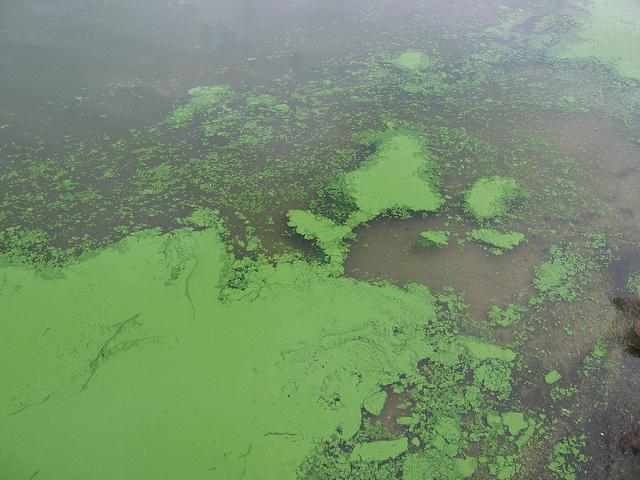Indicators: Cyanobacteria
What are cyanobacteria?
Cyanobacteria, also referred to as blue-green algae, naturally occur in all freshwater ecosystems. However, too many nutrients such as phosphorus and nitrogen in the waterway can result in conditions that lead to cyanobacterial blooms. These blooms can often be identified as floating mats of bad-smelling, decaying and gelatinous scum.

Why is it important to evaluate cyanobacteria?
When cyanobacteria degrade, they may release algal toxins that can be harmful to aquatic and human life. One such algal toxin (also known as a cyanotoxin) is microcystin. Although there are relatively few documented cases of severe human health effects, exposure to cyanobacteria or their toxins may produce allergic reactions such as skin rashes, eye irritations, respiratory symptoms, and in some cases gastroenteritis, liver and kidney failure or death. The most likely pathway to exposure for humans is through accidental ingestion or inhalation during recreational activities in the waterbody.
What can cyanobacteria tell us about the condition of water?
Cyanobacteria can tell us about how safe a waterbody is for recreational use. When high levels of cyanobacteria are present in a waterbody, the biological condition of the water resource may also be degraded, as the condition that allows for cyanobacterial growth is typically high in nutrients and low in dissolved oxygen. Large cyanobacteria blooms may also affect benthic macroinvertebrates and submerged aquatic plants due to decreased light penetration.
